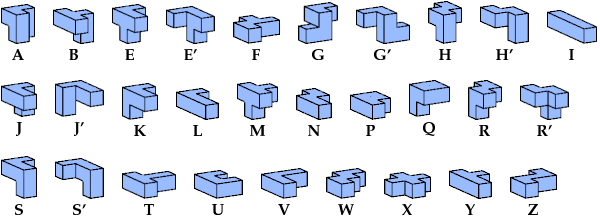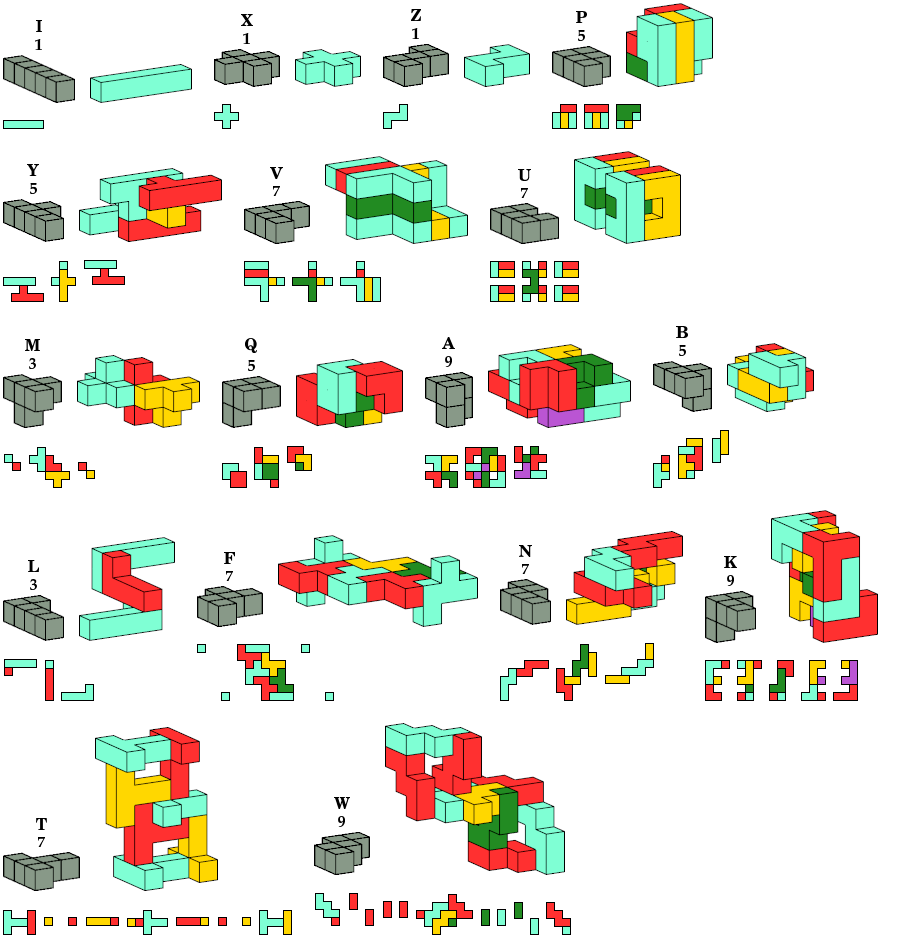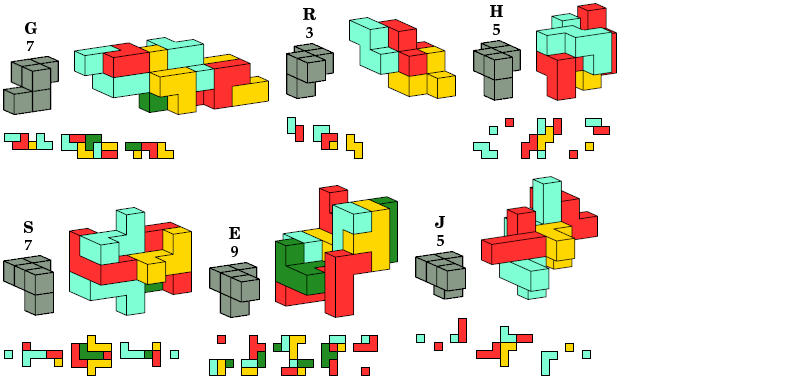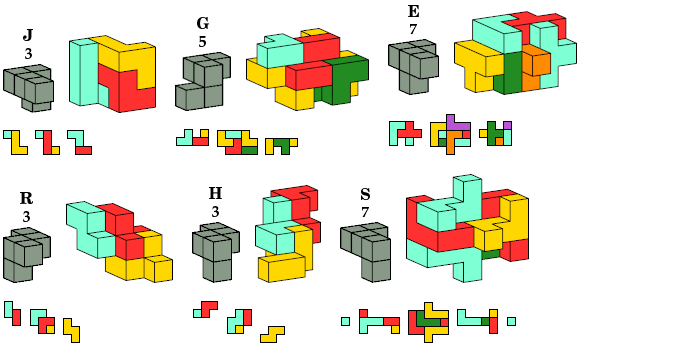Pentacube Oddities with Inverse Symmetry
Introduction
A pentacube is a solid made of five cubes joined
face to face.

An oddity (or Sillke Figure)
is a figure with even symmetry
formed by an odd number of copies of a polyform.
In 1996, Torsten Sillke reported
having found a point-symmetric arrangement of 17 F pentacubes.
He asked whether 17 is the least such odd number,
and more generally whether an odd number of copies of a polycube can be arranged
to achieve any given symmetry.
This was the earliest known mention of polyform oddities.
Polycubes have 33 symmetry classes (including asymmetry),
and 31 of them have even order.
That is too many to show here.
Instead I show only oddities with inverse symmetry,
or point symmetry.
In all pictures, the cross-sections are shown from top to bottom.
If you find a smaller solution, please write.
For other classes of symmetry, see:
Inverse Symmetry
Inverse, or point, symmetry, is the symmetry of diametrically opposite cells.
For every cell of the polycube, there is a cell of the
polycube lying at the same distance
from the center point, in the opposite direction.
The smallest example of a polycube with inverse symmetry and no stronger symmetry
is this hexacube, found by W. F. Lunnon:

Achiral Pentacubes
The solutions for pentacubes I, X, and Z are trivial.
Those pentacubes already have inverse symmetry.

Chiral, Disallowing Reflection

Chiral, Allowing Reflection

Last revised 2024-01-23.
Back to Polyform Oddities
<
Polyform Curiosities
Col. George Sicherman
[ HOME
| MAIL
]





